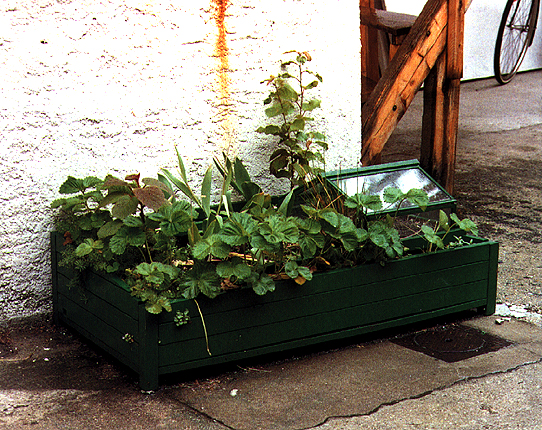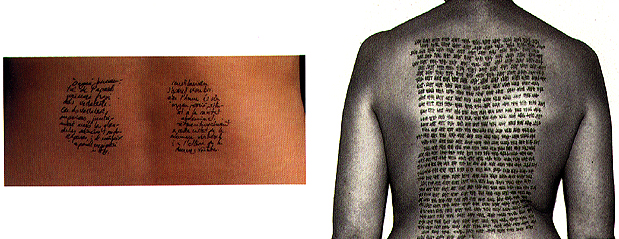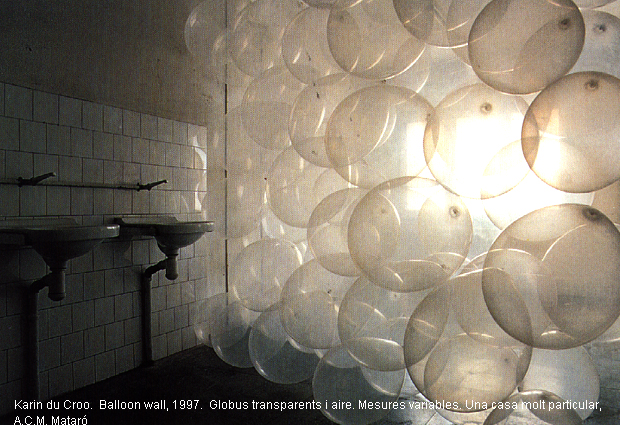De l'espai a la persona
Although their proposals did not have anything to do with them technically, or although their works did not show the relation they had, or although their desires were going through absolutely divergent paths ... it was not by chance that it was He decided to bring them together in the same exhibition. The three artists. And, far from that statism that until then had been transmitted most of the collective exhibitions, what was offered from the work of these artists was the possibility to raise an exhibition where what is make it clear the materialization of a movement. Or the creation or recreation of an almost continuous movement: from one place - from space to place - the person. While it is generated, it occurs, develops or exists ... as time goes by ... while traveling between the work of an artist and the proposal of the next and the latter behind the three artists . All forgetting that one might think that the interest of this proposal was nothing more than the attempt to organize something that was different. Because in the bottom not (only) was this.
And he knew the artists in a completely dissimilar way: Karin, he must have been about for two years and through a friend whom they both knew, who told him that he had a great sensibility and that filled all emotion with great emotion. works in which I worked. An appreciation that he could see when seeing the interventions that the artist had done in one of the places where he had exposed.
Elena, being a member of a selection jury. He And he was surprised by his dexterity in his struggle to find what was his place: between two very different disciplines and in the middle of which his body was. You could also find the one of any of us. The body: any of those spaces that are so hard to make specific. And in Daniel, through Carles, a gallery owner, who taught him some of his photographs of some of his landscapes, which seemed unreal. And it was they were made in the same hand that they were then photographed. As if it were a series of previous notes that the artist had done to perform some scenarios: delightful in their desolation, immediate in their distance. Although it was reproductions of the different spaces where Daniel had lived, worked or exposed. Or simply, been.
And little did they imagine they would end up gathering them.
But, among the works of these three artists there was something that led me to summon them. In a single exhibition. Because from each one of his different records he was, speaking things that we are. Of some of those things that we - the person - identify us with. Like what we are: vulnerable (or helpless or helpless or helpless), precarious (or unstable or insecure) and fragile (or frangible or brittle or delicate). Although our appearance tends to equate to the solidity of a well-built space. From a space that is taught to others as if it were an almost indestructible castle. Beyond any doubt.
This is how he begins to glimpse how works are linked. Or which could be some of those links that are established between the different proposals. Of the three artists. Depending on how they lead you to a reflection. Any Starting from a space that exists -which would be like the metaphor of what our body represents- an abstract place where we sign up for what happens to us as time passes in order to reach the same doors . Of our person. And although he does not know how he can do it, he who knows what he wants from each artist. Of each one of the three artists. And I would like Karin to make an intervention within space - because it is of interest to the vigor of his ephemeral actions or the ability of his fingerprints to violate the rigidity of those spaces where he is shown - which Daniel reproduces any of its places - because it wants to know what it feels when it enters a place without it empties us; It is that through the reproductions that desacralises the mystery that transpire the places where the artist teaches (or creates) his work - and that Elena showed us the hidden parts that our body has: her jewels. From the body - because it is to see our wounds that we feel more capable of recognizing what we are. Our casing That way that has the box that everyone keeps. Inside it.
Because it is inside of his thinking where it was clear what the movement was. Of the exhibition: a space modified / altered by the interference of an intervention, the reproduction on a scale of this space in order to persuade the public to penetrate it and the discovery in its interior of the most intimate part of ours journey. Through the geography of subjectivity. Of our life. I had to wait, however, for artists to say theirs: what artists wanted to show, what artists wanted to do, what artists would decide to do.
And using his words, he looks at Karin, who tells him what he wants: darken the Chapel to focus attention in the lateral spaces. Because after the membranes with which he wanted to cover the two arcades, he wanted to create a fictitious dialogue with some of the words that light. Rising it and lowering its intensity. All simulating the rhythm that allows us to continue living: our breath, our breathing. Our breath.
That's how that space begins to feel like something that is someone. Like someone who does not breathe other than the need to feel: the existence of oneself but also the presence of the other. Next to him.
And it's not until they spend a few more days that is new to Daniel. He talks about his proposal: reproduction on the scale of the interior of a space as if it were a greenhouse prepared for the outside. Six meters and ninety centimeters in length, two meters and one centimeter in height. A space perfectly prepared to be inhabited by any organism. Live
That's when the proposal made by Elena begins to be valued. Because he talked about showing his work inside a space that would be inside another. In order to achieve that approach that required his work: intimate, personal, intransferible and subtle.
And that is how that space, altered by the dialog that maintains the lights and filled up by the volume of a penetrable space, leads us to ask ourselves about what we are from the parts that identify us. To all of us As we also are: people.





